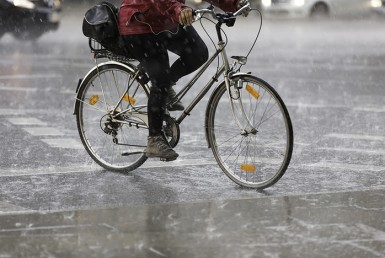Stop making excuses and clean up the clutter in your home!
Time to clean up the Clutter! Electrical outlets and wall plates don’t exactly command a lot of attention. In fact—and we’re going out on a limb here—we’re guessing you may not even remember the last time you took a second look at your wall plates. The last time you likely thought about them was when you were plugging something in—and it was fleeting.
But as boring as those wall plates may be, you do need to check them regularly to see if they need replacing—or you could be setting yourself up for some very bad news down the road.
According to the National Fire Protection Association, electrical outlets cause roughly 2,590 home fires every year in the U.S. And fires started by malfunctioning outlets result in $94 million in property damage each year.
OK, we have your attention now? Let’s take a quick look at some of the most jolting ways your electrical outlets can cause damage.
Cracks can kill, really
Cracked wall plates on electrical outlets can turn into dust traps and, ultimately, fire hazards. Same with undersized wall plates (with gaps of more than 4.5 millimeters). Lint, dust, and hair can act as kindling when they accumulate around the outlet behind the plate, increasing the chances of a short circuit.
And that fire could smolder or spread in your walls, making it hard to put out.
“Just like lint built up on a candle sparks a little bonfire when lit, the same can apply for an outlet,” says Charley Curran, who designed Living Plug, a system intended to improve the safety and energy efficiency of the electrical outlet.
RELATED:
- 10 Things Your Competitors Can Teach You About Real Estate
- Why You Shouldn’t Take Your House Off the Market During the Holidays
- Existing Home Sales Surge Through The Holidays
- Homeowner’s Net Worth Is 45x Greater Than A Renter’s
- Top 5 Reasons You Should Not For Sale By Owner
- How To Prepare Your Home For Hurricane Season
- How Homeowners Celebrate This Hot, New Trend
- Time to File Florida Homestead Exemption!
- 6 Seemingly Innocent Habits That Are Hurting Your Health
- Are You Getting the Home Tax Deductions You’re Entitled To?
- What Would a Millennial Baby Boom Mean for Housing?
- 8 Questions to Ask Yourself to Help You Declutter
Paint in all the wrong places
Sometimes when a room is painted, edges, outlets, and other nonwall surfaces are taped off and remain paint-free. That’s good! But sometimes everything, including hinges, doorknobs, wall plates, carpets, household pets, and so on, gets painted. That’s not so good. If your electrical outlets and wall plates were covered by paint, you may want to replace them.
“Outlet face plates and outlets that have been painted are dangerous, because the stuff can get into the slots and put the blades and pins that go into them in direct contact with the electrical charge,” says Curran. “Paint is simply not designed to withstand that amount of heat and can cause a fire in the right—or wrong—conditions.”
Charred outlet? Yeah, that’s a bad sign
Thomas D. Horne, an electrician for 60 years and a volunteer firefighter in Takoma Park, MD, says if your outlet cover looks burned, brown, or gross, it’s time to check the wiring system for short circuits or other conditions that could cause overheating and, potentially, a fire.
Shorts can occur when even a microscopic piece of a hot wire hits any metal part of the outlet and transfers a current. It’s not something to play around with and could require the outlet to be replaced by a professional, says Horne.
“The nominal cost to replace the outlet outweighs the cost to replace a house,” he says. This can be classified as an understatement.
It’s getting hot in here
Speaking of overheating, outlets and their plates should always be cool to the touch, says Horne. It’s a good idea to check them every now and them for scorching or soot around the connection slots, and to make sure they don’t feel hot or warm.
Even the screws that hold the plate to the wall should not feel hot at all, Horne says. “If they are, that’s a sure sign of overheating.”
And what does “hot” mean to Horne? “Palpably warmer than the interior air temperature,” he says. Test for heat by placing the back of your hand gently against the surface of the plate. Got a live one? You’ll need to take steps right away.
“That much heat indicates a fault in progress that is very likely to progress to a fire,” Horne says.
What to do if you find a problem
The first thing to do is gently unplug all devices from the outlet and turn it off, if controlled by a wall switch. Then feel the wall around the outlet to check its temperature. If the wall is cool, recheck the outlet in a minute or two after you turned if off to see if the temperature goes down. If so, the outlet shouldn’t be used until it’s replaced (preferably by a professional electrician).
But if the wall itself also feels warm, call 911 immediately and get out—a fire may have started. If the outlet alone remains warm or hot to the touch several minutes after being shut off, you should still call the fire department (on a nonemergency line).
“Most fire departments are equipped with thermal imaging cameras that can view the wall’s temperature and check for the heat of a hidden fire,” says Horne.
And never feel like you’re overreacting.
“You can’t be too careful when it comes to preventing a fire in your home,” says Horne.




